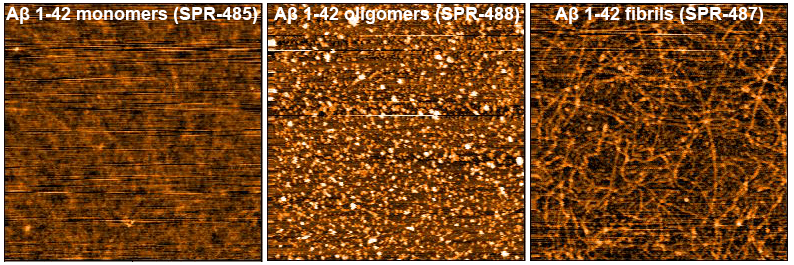Investigating the Connections Between Amyloid Beta and Alpha Synuclein in Neurodegenerative Diseases
Alzheimer’s disease (AD) and Parkinson’s disease (PD) stand as the two most prevalent neurodegenerative disorders, each characterized by the cerebral accumulation of Amyloid Beta (also known as β-amyloid or Aβ) and Alpha Synuclein (also known as α-synuclein or αS), respectively. Both Aβ and αS follow similar pathways of aggregation, initially presenting as monomers before progressing into toxic oligomeric species and insoluble fibrils. Although originally associated exclusively with AD and PD, respectively, the overlap observed in many patients’ clinical and pathological features suggests a potential connection. A growing body of evidence supports the existence of a synergistic relationship between Aβ and αS, from the discovery of an αS protein fragment in the amyloid plaques of AD patients nearly thirty years ago to ongoing comprehensive investigations into Aβ-αS interactions today.
Indications point to a synergistic relationship between Aβ and αS
The linkage between AD and PD began to surface in 1993 with the identification of a peptide known as the non-Aβ component (NAC) in amyloid plaques extracted from AD brains. This NAC was later identified as a fragment of αS, spanning residues 61–95, prompting researchers to speculate about potential shared pathologies between AD and PD. Subsequent evidence supporting this hypothesis has accumulated, notably through significant histological findings: numerous AD patients showcase αS Lewy bodies, the distinctive markers of PD, and individuals diagnosed with PD with dementia (PDD) frequently exhibit Aβ plaques.
Additional research using brain tissues from patients has concentrated on elucidating the connection between Aβ accumulation and the phosphorylation of αS at serine-129, a primary modification observed in Lewy body diseases such as PD, PDD, and dementia with Lewy bodies (DLB). Assessments using ELISA-based methods to measure Aβ40 and Aβ42 (the two primary Aβ isoforms), as well as both αS and pSer129 αS in brain homogenates, have revealed a correlation between Aβ levels, particularly Aβ42, and the phosphorylation of αS at Ser129. This correlation persists when SH-SY5Y cells are exposed to aggregated Aβ42 in vitro.
Transgenic animals have played a crucial role in advancing researchers’ comprehension of the interactions between Aβ and αS. For instance, mice with neuronal expression of both human Aβ and αS have displayed earlier onset of motor deficits and more pronounced impairment in learning and memory compared to mice with singly transgenic αS, alongside an increased presence of αS-immunoreactive neuronal inclusions4. Significantly, the authors of this specific study demonstrated that Aβ peptides induce αS aggregation in a cell-free system and lead to intraneuronal αS accumulation in cell culture. This suggests that drugs designed to inhibit the production or accumulation of Aβ peptides may have the potential to treat a broader range of neurodegenerative disorders than initially anticipated.
Advanced tools for studying the relationship between Aβ and αS
StressMarq Biosciences has developed a cutting-edge product portfolio that encompasses a broad selection of tools for determining how β-amyloid and α-synuclein function together in neurodegenerative disorders such as AD and PD. StressMarq’s β-amyloid products include Aβ monomers (catalog# SPR-485), Aβ oligomers (catalog# SPR-488), and Aβ pre-formed fibrils (catalog# SPR-487), and are complemented by a range of antibodies that include the Anti-Amyloid Oligomers (A11) Antibody (catalog# SPC-506) and Anti-Amyloid Fibrils (OC) Antibody (catalog# SPC-507).
StressMarq’s Aβ oligomers and Aβ pre-formed fibrils both show a dose-dependent toxicity to primary rat cortical neurons, whereas the Aβ monomers do not.
In addition, StressMarq Biosciences provides a range of α-synuclein products to support researchers, including the pSer129-specific monoclonal Anti-Alpha Synuclein Antibody (catalog# SMC-600), the Kinetically Stable Alpha Synuclein Oligomers (catalog# SPR-484), and the Human Alpha Synuclein Pre-formed Fibrils (catalog# SPR-322).

To find out more please visit: www.stressmarq.com
Original Source: Article by Brenda Knox – Uncovering Links Between Amyloid Beta and Alpha Synuclein in Neurodegenerative Diseases





